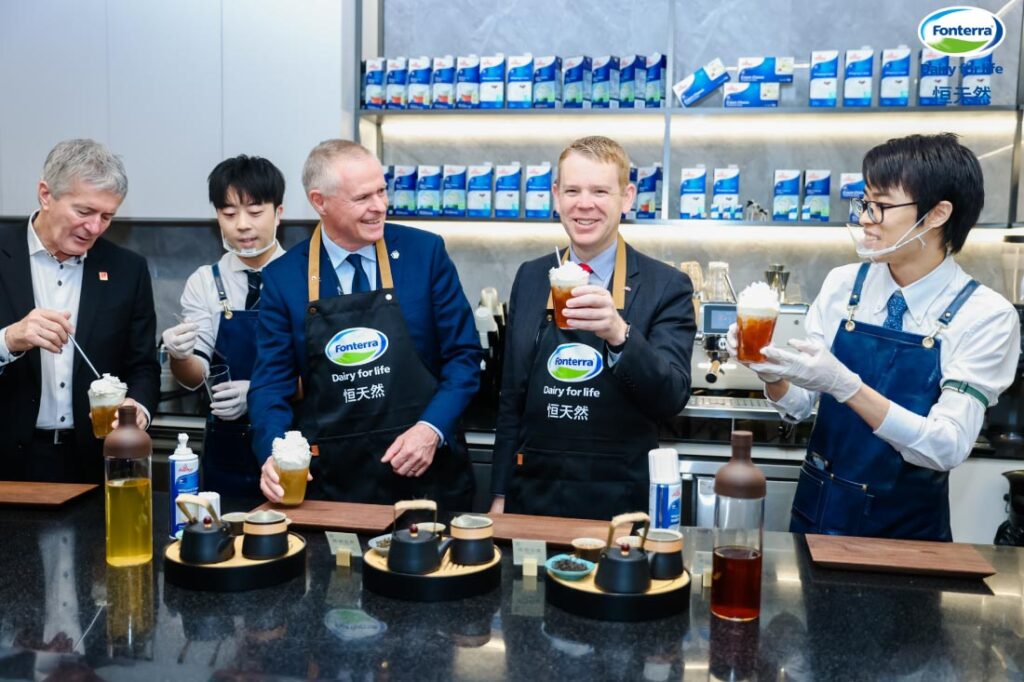Creamilux: Dairy Giant Fonterra to Use Nourish Ingredients’ Animal-Free Fat in New Products
4 Mins Read
New Zealand dairy cooperative Fonterra has teamed up with Australia’s Nourish Ingredients to develop dairy and non-dairy products with the latter’s precision-fermented Creamilux fat.
In a new trans-Tasman partnership, Fonterra will leverage a precision-fermented fat developed by Nourish Ingredients to enhance the functionality of both dairy and non-dairy products.
Nourish Ingredients’ dairy-like Creamilux ingredient – which was showcased in alt-dairy and confectionery applications at April’s Future Food-Tech event in San Francisco – allows manufacturers to enhance the mouthfeel, flavour and emulsification of a variety of foods.
“Creamilux is an innovation platform that combines old technology with new ways of modulating the fat molecules, driving flavour, mouthfeel, and texture all in one potent molecule,” a company spokesperson told Green Queen.
The collaboration was born out of Fonterra’s first tasting of Creamilux in January, which impressed the dairy giant’s team. “Nourish Ingredients is taking a unique approach that aligns perfectly with Fonterra’s focus on leadership in dairy innovation science and being at the forefront of such innovative new food ingredients,” said Jeremy Hill, chief science and technology officer at Fonterra.
Creamilux to be used in both dairy and non-dairy products

“By partnering together, we can explore new ways to help meet the growing global demand for great-tasting, texturally appealing products that deliver… exceptional experiences to customers,” Hill explained.
Nourish Ingredients described Creamilux as a “highly potent, low-inclusion lipid” that offers a “genuine creamy texture and excellent emulsification properties to replicate the mouth-coating sensation of full cream”.
The first part of the collaboration will involve the development of conventional dairy products like cream, cheese, butter and more. The two companies will leverage Creamilux as a key ingredient to “unlock functionality” and preserve the flavour of dairy.
Additionally, Fonterra and Nourish Ingredients will also explore areas where the specialty fat can enhance non-dairy foods that typically rely on dairy lipids, such as bakery items. The aim is to enter new product segments beyond Fonterra’s core dairy activities.
“We are overcoming specific animal ingredient bottlenecks to optimise current animal-based food production capacity without losing quality. This allows us to enable our partners to meet demand with our potent lipids without sacrificing taste and experience,” said Nourish Ingredients CEO James Petrie, who called Fonterra “a great partner” that will help it commercialise “as quickly as possible”.
Nourish Ingredients did not respond to Green Queen’s questions about how this will impact the cost of both dairy and free-from products, and the planned channels and timeline for market launch.
However, at Future Food Tech, the startup – which has raised $39.6M in total funding – debuted the animal-free designer fat as part of a vegan chocolate, which only contained 1% of Creamilux but left a lingering mouthfeel on many attendees’ tastebuds. The low inclusion rate means the ingredient is unlikely to impact budgets, nutrition or production capacity too heavily, and could also help deliver cleaner labels by eschewing additives and emulsifiers.
Fonterra’s emissions under the spotlight

Fonterra is New Zealand’s largest company, and is responsible for 30% of the world’s dairy exports. This plays a key role in making the country the global leader in the export of dairy proteins. Domestically, per capita consumption reaches 400 million litres a year, with 380 litres of milk sold every minute in supermarkets.
But this comes with a major environmental impact – agriculture is to blame for half of New Zealand’s total emissions, and three-quarters of the food system’s footprint is a direct result of methane from livestock. Meanwhile, Fonterra is the country’s worst polluter, emitting over 26.8M tonnes of greenhouse gases in 2023.
The cooperative has committed to slashing its emissions footprint from dairy by 30% by the end of the decade. But it was recently the subject of a misinformation report by the Changing Markets Foundation, where it faced accusations of greenwashing after it was revealed that the company spends over five times their R&D budget on marketing and PR, which often portrays New Zealand dairy as climate-friendly.
Fonterra is also the lead named entity in an ongoing climate change trial as part of a case brought by a Māori leader against a group of dairy and fossil fuel operators. But the announcement of Fonterra’s new precision fermentation partnership did not have any sustainability-related messaging.
When asked about the environmental impact of Creamilux in light of Fonterra’s emissions, Nourish Ingredients – which is awaiting regulatory approval in Singapore for Tastilux, an animal-like fat for meat analogues – said it would publicly share climate data “down the line”.
This isn’t Fonterra’s first foray into precision fermentation. In 2022, it partnered with DSM-Firmenich Venturing to form a joint venture called Vivici, which earned self-determined Generally Recognized as Safe (GRAS) status for its animal-free beta-lactoglobulin (a whey protein) in the US in February.
“Dairy will always be at the core of our business, now and in the future,” said Hill. “At the same time, ingredients produced through emerging technologies can work seamlessly in and alongside our dairy products, expanding the range of products and choices we can offer to customers and consumers.”



